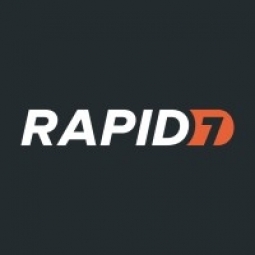下载PDF
Rapid7: A Game-Changer for Elara Caring’s Cybersecurity Infrastructure
技术
- 网络安全和隐私 - 端点安全
- 网络安全和隐私 - 入侵检测
适用行业
- 医疗保健和医院
- 国家安全与国防
适用功能
- 采购
- 质量保证
用例
- 网络安全
- 篡改检测
服务
- 网络安全服务
挑战
Elara Caring 是美国最大的家庭医疗保健提供商之一,在三个家庭医疗保健公司合并后面临着重大挑战。此次整合创造了新的机遇,但也给公司的IT基础设施和数据安全带来了困难。首席信息安全官 (CISO) Eric Bowerman 主要关注保护最终用户免受医疗保健行业常见的网络钓鱼和勒索软件攻击。由于 COVID-19 大流行,向在家工作环境的转变使事情变得更加复杂。该公司在远程员工的笔记本电脑上安装的管理软件有限,这意味着他们无法像员工在办公室时那样进行控制。这提出了与受保护的健康信息 (PHI) 相关的合规性问题。
关于客户
Elara Caring 是一家总部位于达拉斯的公司,也是美国最大的家庭医疗保健提供商之一。该公司在东北部、中西部和西南部的 16 个州开展业务,在 200 多个地点雇用了约 32,000 名护理人员。 Elara Caring 每天为超过 60,000 名患者及其家人提供服务。该公司是三个家庭医疗保健公司合并的结果,提供全面的个人护理、熟练的家庭护理、临终关怀和行为健康服务。
解决方案
为了应对这些挑战,鲍尔曼进行了广泛的研究、与供应商交谈并进行了概念验证。他最终选择了领先的漏洞管理解决方案Rapid7 InsightVM 和Rapid7 托管检测和响应(MDR) 服务来进行24/7 威胁检测和响应。 Bowerman 专注于最关键的安全领域,包括端点安全控制、治理、风险、合规性以及漏洞管理。鉴于安全团队规模较小,而且他们必须保护的基础设施多种多样,鲍尔曼正在寻找一种可以充当“力量倍增器”的解决方案。 Rapid7 的 MDR 解决方案提供 SIEM、专家团队、24/7 监控和主动威胁搜寻。 Rapid7 还为 MDR/SIEM 和漏洞管理解决方案提供单一代理,这对 Bowerman 来说是一个令人信服的论据。
运营影响
数量效益
相关案例.

Case Study
Hospital Inventory Management
The hospital supply chain team is responsible for ensuring that the right medical supplies are readily available to clinicians when and where needed, and to do so in the most efficient manner possible. However, many of the systems and processes in use at the cancer center for supply chain management were not best suited to support these goals. Barcoding technology, a commonly used method for inventory management of medical supplies, is labor intensive, time consuming, does not provide real-time visibility into inventory levels and can be prone to error. Consequently, the lack of accurate and real-time visibility into inventory levels across multiple supply rooms in multiple hospital facilities creates additional inefficiency in the system causing over-ordering, hoarding, and wasted supplies. Other sources of waste and cost were also identified as candidates for improvement. Existing systems and processes did not provide adequate security for high-cost inventory within the hospital, which was another driver of cost. A lack of visibility into expiration dates for supplies resulted in supplies being wasted due to past expiry dates. Storage of supplies was also a key consideration given the location of the cancer center’s facilities in a dense urban setting, where space is always at a premium. In order to address the challenges outlined above, the hospital sought a solution that would provide real-time inventory information with high levels of accuracy, reduce the level of manual effort required and enable data driven decision making to ensure that the right supplies were readily available to clinicians in the right location at the right time.

Case Study
Gas Pipeline Monitoring System for Hospitals
This system integrator focuses on providing centralized gas pipeline monitoring systems for hospitals. The service they provide makes it possible for hospitals to reduce both maintenance and labor costs. Since hospitals may not have an existing network suitable for this type of system, GPRS communication provides an easy and ready-to-use solution for remote, distributed monitoring systems System Requirements - GPRS communication - Seamless connection with SCADA software - Simple, front-end control capability - Expandable I/O channels - Combine AI, DI, and DO channels

Case Study
Driving Digital Transformations for Vitro Diagnostic Medical Devices
Diagnostic devices play a vital role in helping to improve healthcare delivery. In fact, an estimated 60 percent of the world’s medical decisions are made with support from in vitrodiagnostics (IVD) solutions, such as those provided by Roche Diagnostics, an industry leader. As the demand for medical diagnostic services grows rapidly in hospitals and clinics across China, so does the market for IVD solutions. In addition, the typically high cost of these diagnostic devices means that comprehensive post-sales services are needed. Wanteed to improve three portions of thr IVD:1. Remotely monitor and manage IVD devices as fixed assets.2. Optimizing device availability with predictive maintenance.3. Recommending the best IVD solution for a customer’s needs.

Case Study
HaemoCloud Global Blood Management System
1) Deliver a connected digital product system to protect and increase the differentiated value of Haemonetics blood and plasma solutions. 2) Improve patient outcomes by increasing the efficiency of blood supply flows. 3) Navigate and satisfy a complex web of global regulatory compliance requirements. 4) Reduce costly and labor-intensive maintenance procedures.

Case Study
Cloud-based healthcare solution for Royal Philips
Royal Philips wanted to launch its cloud-based healthcare solution HealthSuite Digital Platform in China to deliver services to help cope with challenges related to urbanization and population growth. Philips wanted to achieve this goal by combining mobile, cloud computing and big data technologies. To bring this platform and product to market, Philips required cloud computing and local technical service capabilities in China, in addition to a flexible IT infrastructure that could handle user requests.






